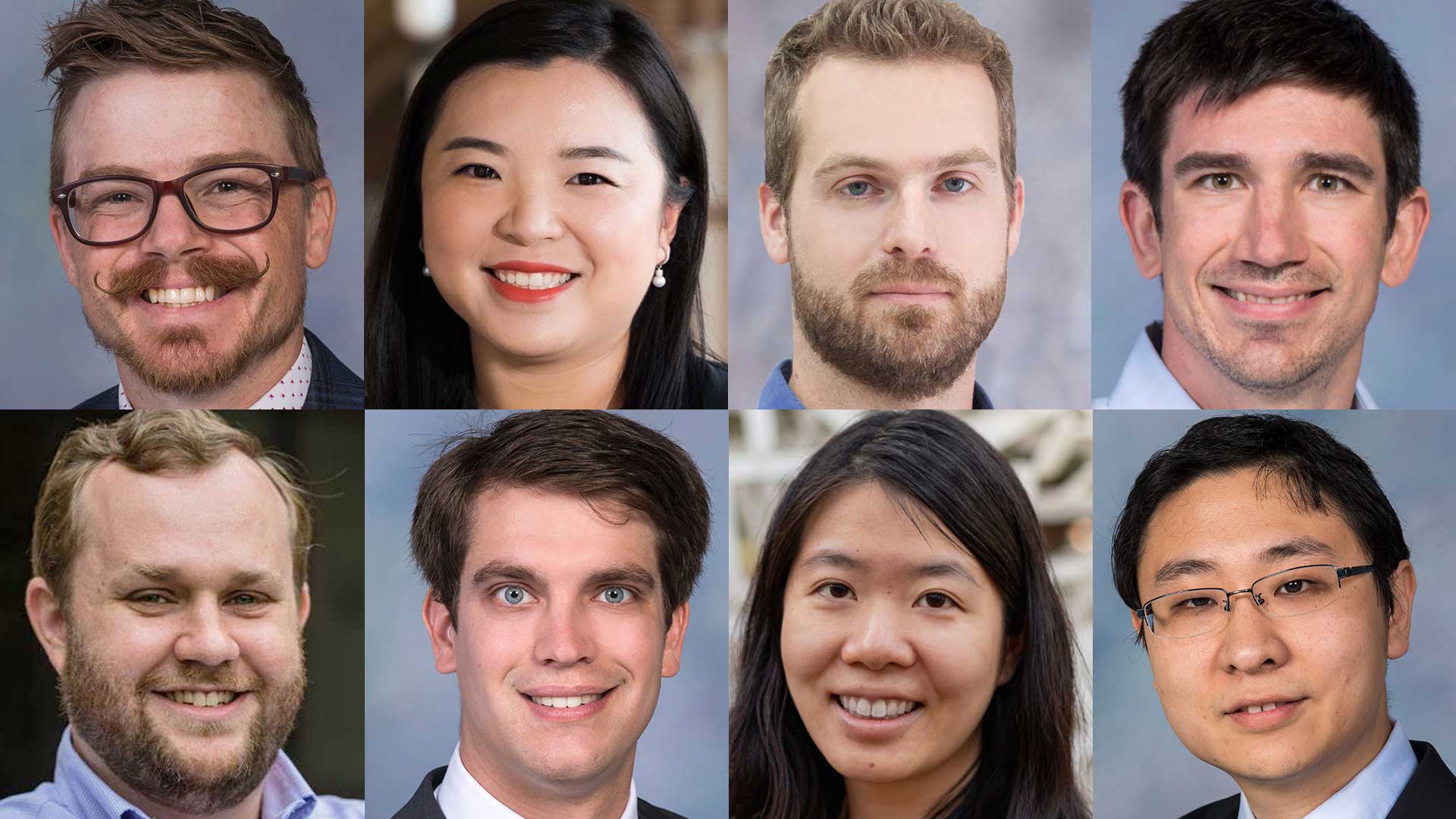This article was updated on May 5, 2022.
Eight young researchers in the George R. Brown School of Engineering are recipients of National Science Foundation CAREER Awards, among the most competitive and prestigious given by the federal agency.
The winners are Nathan Dautenhahn, assistant professor of computer science (CS); Xue (Sherry) Gao, T.N. Law Assistant Professor of Chemical and Biomolecular Engineering (ChBE); Anastasios Kyrillidis, the Noah Harding Assistant Professor of CS; Daniel J. Preston, assistant professor of mechanical engineering (MECH); Thomas Senftle, the William Marsh Rice Trustee chair and an assistant professor of ChBE; Geoff Wehmeyer, assistant professor of MECH; Kaiyuan Yang, assistant professor of electrical and computer engineering (ECE); and Vicky Yao, an assistant professor of computer science.
CAREER Awards are given annually to some 400 young scientists and engineers in support of “early career faculty who have the potential to serve as academic role models in research and education and to lead advances in the mission of their department or organization.”
Nathan Dautenhahn

Dautenhahn was awarded a five-year, $630,000 grant to fund his “Least-Authority Virtual Architecture” (LAVA) computer security strategy. He proposes sealing security gaps that would otherwise cost industry and the public billions of dollars. His proposal is titled “Automatically Taming System Complexity with the Least-Authority Virtual Architecture.”
“The challenge with baking security into products by default,” Dautenhahn said, “is that without users there’s no money to invest in security. This ends up forcing bad security practices in exchange for more functionality and users, because if people aren’t using your product, it doesn’t matter how secure it is. You end up having a scenario I call over-privilege, where users and software can access data or information they shouldn’t have.”
Dautenhahn proposes a kind of compartmentalization: “Each component within a computing system should only have access to the resources they need to do the job they’ve been given. We borrow this principle from the military. There it’s known as ‘need to know.’
“The big idea for the grant -- and why it’s a 20-year and not just a five-year project -- is to figure out if we can systematically retrofit least-authority security boundaries into existing products Since we are not going to change the economics of security, is it possible to retrofit security boundaries in to provide meaningful firewalling?”
Dautenhahn earned his Ph.D. in CS from the University of Illinois at Urbana-Champaign in 2018 and joined the Rice faculty that year.
Xue (Sherry) Gao
Gao’s grant will help fund her work creating versatile toolkits for controlling gene expression. The ability to turn specific genes on or off at precise times and places in the body. That would enable researchers to study gene functions and treat diseases more effectively. Gao hopes to create tools that grant that level of control and include built-in safety features to prevent genes from being expressed at the wrong places and times.

Gao, who has joint appointments in bioengineering and chemistry, joined the Rice faculty in 2017. She earned her Ph.D. in ChBE from UCLA in 2013.
“The bigger goal or question is ‘Can we control biology or engineer biology to better serve our purposes for treating diseases, for producing biofuels or drugs or other valuable chemicals?’” she said. As an engineer, Gao seeks to combine what she’s learned from the fields of synthetic biology and protein engineering to develop a broadly applicable platform for gene regulation.
Her CAREER research will center on adapting an existing library of small-molecule drugs that have already been developed for precision dosing. Gao and her students will use synthetic biology principles to design more than a dozen systems that use the small molecules to control gene expression in mammals.
“We’re not creating the small-drug library but adapting a large one that’s been developed by many labs for many years,” she said.
The control system is designed to ensure: safety (as gene regulation requires multiple components), tunability (regulation can be dialed up or down by increasing or decreasing drug dosage) and sensitivity (multiple genes can be controlled simultaneously to direct complex cellular behaviors). It will also allow for precision timing of gene activation, as drug dosage can be calculated based on how long the drug remains active in the body.
“In this project, we are not only able to turn on gene expression, but also we can turn off the gene expression with the metabolism,” Gao said.
The design will allow what Gao calls “multiplex control,” meaning complexes can be mixed and matched in ways that allow for controlling complex cellular behavior. The system could be designed to activate a gene only if each of two small-molecule complexes are present or if only one is present.
“If I want to only induce the gene expression in a specific organ, we can just deliver the specific small molecule into that organ so it only gets diffused in the target regions,” she said. “Drug dosage can be used to regulate the magnitude of gene expression and the time and place of expression.”
The system will be first applied for controlled genome editing.
“In this project, we won’t be engineering CRISPR proteins that edit genes, but we’ll be controlling them like we would any other genes,” Gao said. “We want to show we can do this for CRISPR genome editors first because gene editing requires high-precision. It’s extremely important to improve our control of them.”
Anastasios Kyrillidis

Kyrillidis, by further exploring the theory and design of non-convex optimization, hopes to devise a technology for faster, more robust algorithms with impacts in many fields. He has been awarded a five-year, $650,000 grant for his research proposal, “Algorithmic foundations for practical acceleration in computational sciences.”
“Given that we lack theory, more often than not, in non-convex optimization,” Kyrillidis said, “researchers often follow trial-and-error procedures, which leads to heuristics. Deciding when heuristics are provable algorithms is a pressing need for the scientific community and society as a whole.”
Kyrillidis’ goal is to devise algorithmic foundations and theory that will accelerate problem solving. This would include the design of fast algorithms as an active research area in machine learning, information processing and optimization research.
Understanding how performance is obtained using efficient algorithms is essential to designing practical and safely applicable learning, he said. His research will focus on three priorities: Faster convergence in structure-rich problems, with emphasis on matrix-factorized machine learning problems; algorithmic acceleration in non-convex scenarios, with a focus on neural network architectures; and acceleration techniques in machine-learning systems.
Daniel Preston
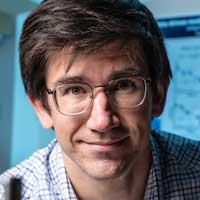 Preston, director of the Preston Innovation Laboratory, was awarded a five-year, $600,000 grant for his proposal: “Textile-Based Wearable Robots with Integrated Fluidic Logic.” Some 85 million adults in the United States who live with physical functional limitations could potentially benefit from Preston’s proposed work.
Preston, director of the Preston Innovation Laboratory, was awarded a five-year, $600,000 grant for his proposal: “Textile-Based Wearable Robots with Integrated Fluidic Logic.” Some 85 million adults in the United States who live with physical functional limitations could potentially benefit from Preston’s proposed work.
“When they’re incorporated into wearable robots,” he said, “soft fluidic actuators provide assistive, rehabilitative and even superhuman capabilities while having advantages over hard exoskeletons. They are lightweight and safe, they feel comfortable when worn in close contact with the body.”
Soft fluidic actuators, however, pose problems of their own. They rely on bulky, hard components, such as valves and electronic control systems, which increase weight and decrease comfort when integrated into wearable robots. They sometimes require cumbersome tethers to external devices, making people with mobility limitations less likely to adopt these technologies.
To address these problems, Preston proposes development of a platform for completely textile-based, non-electronic computation that can be integrated directly into the structure of wearable robots. This would eliminate the need for rigid control systems and enable soft wearables that look and feel like everyday clothing.
“Our first objective,” Preston said, “is to develop a fundamental understanding of this approach, starting from the circuit level, by designing textile-based fluidic analogs to resistors, capacitors and relays.”
Second, he proposes using these circuit elements as the building blocks for fluidic digital logic, engineered for high performance in terms of speed and other computational metrics. Finally, he aims to integrate textile-based fluidic computers, along with textile-based input/output devices and actuators, directly into the structure of wearable robots.
Preston earned his M.S. and Ph.D. in MECH from MIT in 2014 and 2017, respectively, followed by two years of postdoctoral work at Harvard. He joined the Rice faculty in 2019.
Thomas Senftle
Senftle, the William Marsh Rice Trustee chair and an assistant professor of chemical and biomolecular engineering, was awarded $572,000 grant to improve catalysts through machine learning.
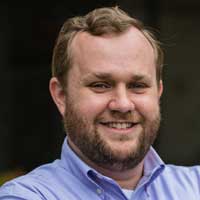
Senftle, who joined the Rice faculty in 2017, develops computational tools for assessing complex catalysts that facilitate chemical reactions, a common example being the catalytic converters in cars that capture pollutants and convert them into innocuous products before they escape. Catalysts are critical to the chemical, energy and pharmaceutical industries, amounting to a $20 billion-a-year business.
In a recent paper, Senftle and colleagues at Pennsylvania State University, where he earned his Ph.D. in 2015, revealed that combining machine learning and quantum chemistry can save time and money in catalyst design.
“The typical catalyst is comprised of metal nanoparticles on oxide supports,” Senftle said. “You can think of the supports as the scaffolding that holds the catalytically active metal material in place. The behavior of catalytic nanoparticles can be controlled and tuned by varying the composition of the support with different elements.
“The number of combinations is extremely large: We have the whole periodic table we can choose from to tune the electronic behavior of that support,” he said. “Doing this rationally becomes very challenging because there are so many options.”
Machine learning techniques will help Senftle and his team build simulations to understand physical interactions between the nanoparticles and their supports. Ultimately, they aim to produce open-source models to speed development of catalysts with an emphasis on energy conversion, storage and utilization. In the process, they expect to develop a library of catalytic materials with optimized particle/support combinations.
Geoff Wehmeyer
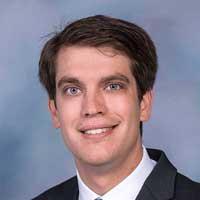
Wehmeyer was awarded a five-year, $535,934 grant for his proposal, “Nanoscale temperature mapping across interfaces using scanning transmission electron microscopy.”
With his research group, the Nanoscale Heat Transfer Lab, Wehmeyer plans to use Rice’s electron microscopes to deepen understanding of nanoscale heat transfer and improve the performance of products ranging from transistors to light-emitting diodes and heat-assisted magnetic recording devices.
“The interfaces between materials are a major barrier to thermal management of nanotechnologies,” he said. “Our goal is to probe the small-scale mechanisms of how heat flows across material junctions, which would allow engineers to achieve more efficient device performance. That could lead to improved device durability and efficiency.”
Currently, engineers find it difficult to evaluate the predictions of various interfacial heat transport theories at the nanoscale, partially because thermal experiments are not able to map temperature at the fine length scales of interest.
Wehmeyer earned his Ph.D. in MECH from the University of California, Berkeley, in 2018, and joined the Rice faculty the same year.
Kaiyuan Yang
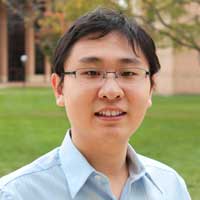
Kaiyuan Yang, assistant professor of electrical and computer engineering (ECE), has won a $500,000 grant to study the reliability and security of wireless, battery-less, minimally invasive (WBMI) bioelectronics. Yang’s proposal is titled “Reliable and Secure Minimally Invasive Bioelectronic Implants through Contextual Awareness.”
“WBMI bioelectronics that can be deeply implanted in humans through minimally invasive injection, ingestion or through vessels, show great promise in transforming many clinical and scientific applications benefiting health and well-being,” Yang said. “While there are extensive research efforts on these devices worldwide, crucial reliability and security issues are largely overlooked in state-of-the-art systems.
“However, given the extreme power and size constraints of these devices, we need to build reliability and security protections holistically with the essential bioelectronic functionalities and components, not as an afterthought.”
Researchers face three challenges when making WBMI bioelectronic implants reliable and secure: designing safe, efficient, reliable wireless power delivery methods; ensuring secure access and communication in remote telemedicine and emergency situations; and real-time monitoring of potential failures or attacks during extended periods of operation.
“The outcome of our research will be a one-of-a-kind hardware platform that expedites the research and development of reliable and secure implantable bioelectronic systems with pre-clinical and clinical applications,” Yang said. His interdisciplinary project spans materials, integrated circuits, power electronics, security, wireless communication and computing.
Yang earned his M.S. and Ph.D. in ECE from the University of Michigan in 2014 and 2017, respectively, and his B.S. in electrical engineering from Tsinghua University in China in 2012. He joined the Rice faculty in 2017 and directs the Secure and Intelligent Micro-Systems Lab.
Vicky Yao
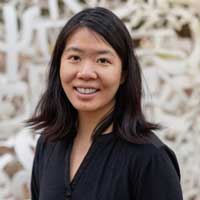
With her five-year, $790,000 grant, Yao plans to develop machine learning methods and build open-source software to help biomedical researchers analyze DNA methylation, a biological process by which a methyl group is added to a cytosine, one of DNA’s four bases. Such small modifications affect gene expression and show region-specific patterns. Yet they’re dynamic, changing with age and in response to environmental factors such as air quality, diet and exercise.
This interests Yao, who wants to sift through the more than 28 million DNA methylation sites in the genome to find “fingerprints” representative of distinct tissues and cell types and how these translate into essential downstream functions.
“I’m grateful for the NSF award because this is somewhat of a new direction for me,” said Yao, who joined Rice in 2019 with backing from the Cancer Prevention and Research Institute of Texas and has co-authored high-profile papers applying machine learning methods to uncover once-hidden molecular processes responsible for arthritis and neurological disease.
Methylation occurs throughout the body, and gaining a better understanding of this fundamental biological process will help researchers who study development, aging and disease, she said.
“DNA methylation is a natural interface between the environment and what happens on the DNA level, and there can be many downstream effects,” Yao said. “You inherit your DNA from your parents -- your A, C, G and Ts -- and these are fixed aside from mutations which can cause disease. But methylation is a natural way to change or reverse things without adjusting the actual genome.
“It plays such a big role in regulation that it is often referred to as the ‘fifth base of DNA,’” she said. “Methylation clearly can change whether a gene is expressed or not, but it’s also relatively stable. This means we can use it as a biomarker to help orient where we are in the body and, interestingly, begin to pinpoint how environmental stimuli affect our cells.”

